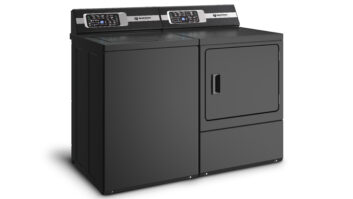Under pressure from independent dealers and servicers, major appliance manufacturers are beginning to address the inadequacies of their warranty service systems. But unless more is done soon to overhaul the process, the customer experience will deteriorate, brand loyalty will falter, and vendors will face increased returns as the number of authorized repair centers dwindle.
That’s the warning from the Appliance Consumer Service Task Force (ACSTF), a two-year-old alliance of buying groups, servicers, parts distributors and trade associations that is lobbying industry leaders Electrolux/Frigidaire, GE, Maytag and Whirlpool to fix the broken system. The group’s major beefs:
• Inadequate warranty labor rates, which on average are only being reimbursed at 60 percent of fair market value;
• The absence of margins on warranty parts, which prevents servicers from recouping the full cost of handling;
• An inefficient warranty billing process, which often requires multiple filings and paperwork.
As a result, said ACSTF’s chairman Bob Dickerman, a former dealer and current president of Brand Source’s North Central Region, most independent’s service departments are now running at a loss, even as the workload increases. “Independent servicers do over 90 percent of the industry’s repairs but only have a 32 percent market-share,” he told TWICE at an ACSTF briefing, held here during last month’s NARDA Fall Institute (see TWICE, Oct. 25, p. 22).
Despite the greater demand for repair work — a function of the proliferation of big-box doors over the past decade — inadequate compensation from the original equipment manufacturers (OEMs) is forcing servicers to be more selective in the calls they respond to, with their own customers and more profitable repair jobs getting higher priority.
What’s more, the dearth of incentives has dissuaded young workers from pursuing careers in appliance repair, leaving a shortage of qualified technicians and an aging servicer pool whose average age is over 50.
The consequence for consumers is a poorer customer experience and a diminishing number of repair options, particularly for those in rural areas. “The consumer is demanding quality service, and we need to take care of her in a professional, timely manner,” Dickerman said. “Brand loyalty increases and exchanges decrease if the product is repaired right the first time. That’s what this task force is after.”
So far, the group is making headway. “We’re starting with the Big Four vendors and then can follow through with other manufacturers. But if this can be settled, the initiatives might filter down to others.” Indeed, ACSTF members laud Sub-Zero, which has established a one-step payment process, and In-Sink-Erator, which has been aggressive in addressing warranty repair issues.
Among the majors, GE has been the most proactive, having moved to a one-pay system and a new program last April that pays service providers a 10 percent handling fee on all warranty parts. In addition, GE is exploring other cost-saving measures such as the use of GPS systems, and improving the efficiency of its parts distribution network, while both GE and Whirlpool are rapidly expanding their technician training programs.
But according to a recent presentation by the MARTA Cooperative of America’s ACSTF Committee, Whirlpool, Maytag and Frigidaire, which are each beset by higher raw materials costs and squeezed margins, are either reluctant or unable to raise warranty labor rates or provide margin on parts, while Frigidaire and Maytag have nixed one-pay systems.
Adding salt to a wound, Maytag has been pursuing its own agenda for a Maytag service network, and has dramatically decreased “customer relations help” to the consumer and removed the dealer from the negotiations, the committee reported, making it the “biggest disappointment” among the Big Four.
Still, Dickerman is optimistic. “The vendors have been working hard on product development and marketing, and they admit the system needs repair,” he said. “The question is, how do they fund it?”
To that end, the ACSTF has proposed a three-year plan that slowly implements the group’s three key initiatives while requiring concessions from the servicer, parts distributor and OEM in the process. The benefits, ACSTF argues, is cost savings for all parties, more companies willing to perform warranty service work (for big-box retailers as well), higher priority given to warranty calls, more warranty parts being carried in servicer inventories and increased customer satisfaction.
The ACSTF will continue to meet with manufacturers to press for warranty reform. Dickerman can be reached at (507) 377-0102 or at [email protected].













